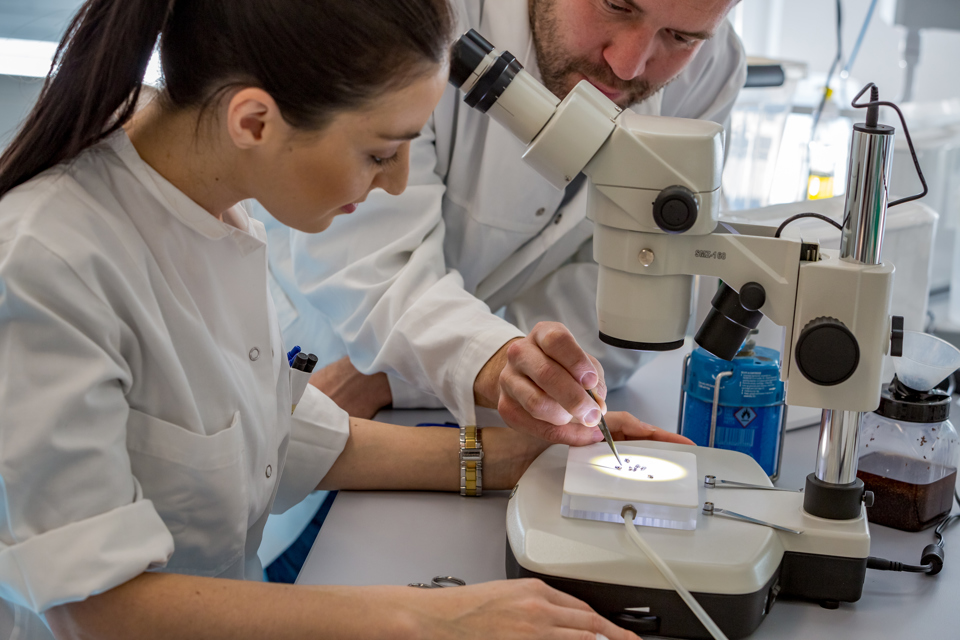Fruit flies help improve treatment of mental illnesses
One of the projects currently taking place in the labs in Aalborg may in the future become an important stepping stone for optimized treatment of people with mental illnesses. Torsten Nygård Kristensen explains:
- “We have recently initiated a project in which we are going to use fruit flies as a model for human mental illnesses. Humans and fruit flies are actually very much alike genetically – 75% of all known genes that have been identified as connected to mental illnesses in humans are present in fruit flies as well. This means that we can work with those genes in the flies – either duplicate the genes or knock them out so they don’t function – and see how this affects the flies’ behavior. This enables us to study whether having a specific type of gene makes our flies react in a certain way to a specific type of medicine” Torsten Nygård Kristensen says. Through these experiments, the researchers get results that may aid the development of personalized medicine for mental illnesses including schizophrenia and ADHD.
“We hope that the identification of the genes that cause positive – or negative – reactions from specific medicines will be useful for the future development of targeted medicine. Since it can be used as a pointer towards how human patients will react to these medicines, it may serve to improve their treatment – and their lives – markedly” he adds.
Mapping dissemination of diseases through houseflies
Another major project that the researchers at Aalborg University are currently working on is applying knowledge on stress biology – including how organisms react to being subjected to a variety of bacteria – on identifying the role of houseflies in the dissemination of Campylobacter bacteria in chicken farms.
- “If we consider a bacteria such as Campylobacter, which is fairly infamous from being found in chicken meat, it has turned out that the housefly plays a major role in the dissemination of this bacteria from A to B – for instance into chicken farms. We have been out in the field to gather flies at different locations in Denmark, and have subsequently looked at questions like, how does the fly move from A to B, and are there patterns to how they travel? In essence, we have looked at the genealogical tree of the flies to determine which farms or areas they stem from” Simon Bahrndorff explains and adds:
- “Recently, we have also started looking at the microbiome of the flies to map exactly what kinds of bacteria are present in them. We use this to study how the microbiome affects the flies’ ability to carry – and spread – bacteria. In this work, we are performing bacterial transfers among flies by extracting the colon of one group of flies, dissolve them in a suspension of sugar and feed it to another group of flies. If it turns out that we can make a healthy fly sick or vice versa, we will have a model system that will let us test a wide variety of things concerning the dissemination and potential control of these bacteria. We will also be able to identify the microbiomes of flies that are not affected by the bacteria – and even those that, when transferred, enable a sick fly to fight the bacteria and get better.”

